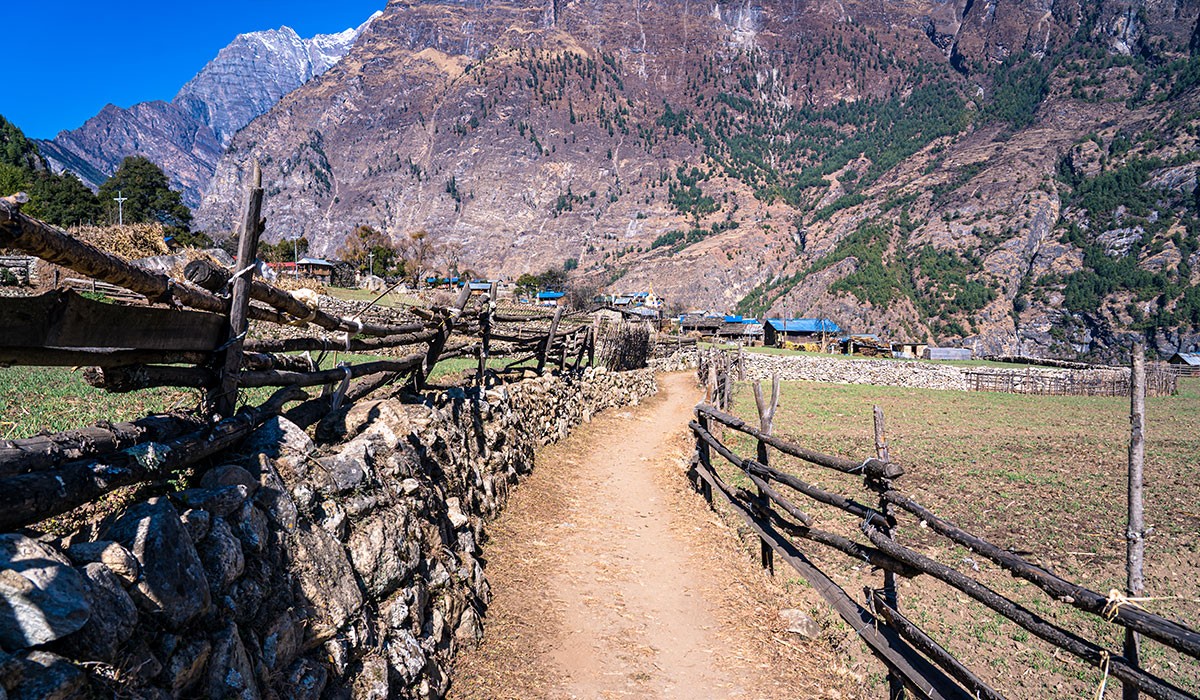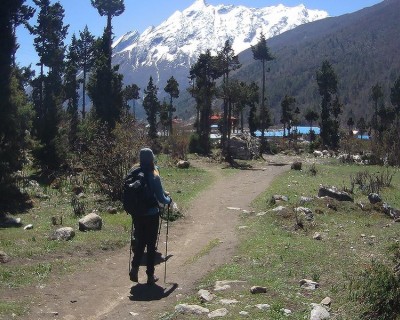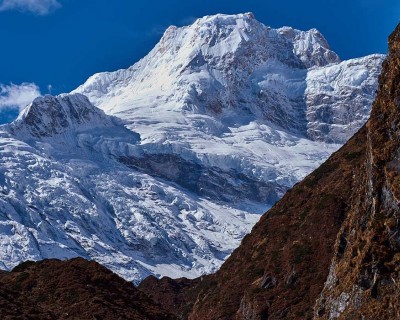List of Permits Required for the Trek
The Manaslu Circuit and Tsum Valley Trek traverse diverse ecological zones, a culturally protected region and restricted borders near Tibet. Thus, in order to complete this trek legally and ethically, you will need to secure multiple trekking permits. Each permit addresses a different purpose, from environmental conservation to tourism control in the region.
Here is a detailed breakdown of the Manaslu Circuit Tsum Valley Permit. Here, you will be able to understand the scope of each permit, who issues it, why it matters and special considerations for the foreign trekkers.
Manaslu Restricted Area Permit (RAP)
The Manasalu RAP permit is mandatory for trekkers exploring this duo itinerary. The villages between Jagat and Samagaon ( Jagat, Deng, Namrung, Namlung and Samagaon) are the restricted section of the Manasalu route. This zone is geopolitically sensitive due to its proximity to the Tibetan border and its indigenous communities.
This permit ensures safety, controlled entry and protection of cultural assets. The authorities also track the RAP holders for security and rescue logistics if needed.
Permit Issues By:
- Department of Immigration, Kathmandu
- Can only be obtained through a registered trekking agency
Rules:
- The trekking group must have at least 2 trekkers
- A licensed guide is mandatory
- Trekkers must use a registered agency (like Marvel Adventure)
- A solo permit is not issued under any circumstances
Tsum Valley Restricted Area Permit (RAP)
Like Manaslu RAP, Tsum Valley also aims to conserve the delicate ecosystem and ancient Himalayan culture. This permit covers the entry into the remote spiritual and cultural basin of the Upper Tsum region. The Buddhist heritage sites like Mu Gompa, Rachen Nunnery and Chhokang Paro come under the restricted region.
Permit Issues By:
- Department of Immigration, Kathmandu
- Only obtainable through a registered agency
Rules:
- The group should have at least 2 trekkers
- A licensed guide is mandatory for the trek
- Permit must be pre-arranged by a registered agency before leaving Kathmandu
Cultural Note: The Tsum Valley has been a non-violence zone since 1920. People here follow the ‘Shyagya Tradition’ which bans the communities from harming animals or nature. Entry regulation via RAP helps to preserve this sacred ecosystem interwoven with Buddhist ethics.
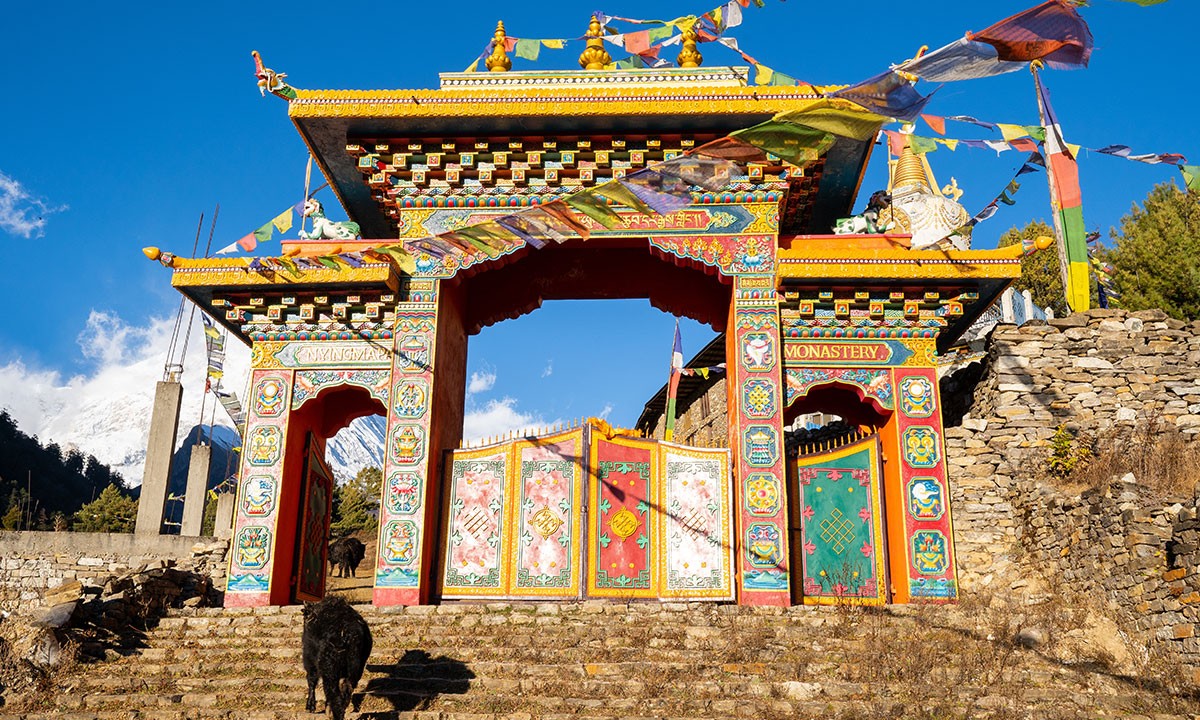
Manaslu Conservation Area Permit (MCAP)
This permit supports the conservation efforts for the natural resources of Manaslu Conservation Area. MCAP allows access to the regions outside the strictly restricted RAP zones. The fee from this permit is put toward local development, trail maintenance and community eco-projects.
Permit Issues By:
- Nepal Tourism Board (NTB)- Bhrikutmandap, Kathmandu
The MCAP Permit is compulsory for anyone who is entering the Manaslu region. Even if you don’t plan to enter the RAP zones, you will need this permit to enter Manaslu.
Annapurna Conservation Area Permit (ACAP)
Your trek will explore the majestic charm of both the Manaslu and Tsum regions. However, after crossing Larkya La Pass, this circuit trail will merge with the Annapurna region at Dharapani (1,860 meters). As this village lies in the Annapurna Conservation Area, acquiring an ACAP becomes necessary.
Permit Issues By:
- Nepal Tourism Board (NTB)- Kathmandu or Pokhara
The ACAP permits funds for the essential trekking infrastructure, conservation education, porter shelters and environmental monitoring. This contribution helps to manage, maintain and upgrade one of the most fragile and busiest trekking zones in Nepal.
Permit Cost Breakdown (Updated Rates)
The permit fees for trekking in Nepal are regulated by the Government of Nepal. Depending on the nature of the permit, the pricing may vary based on season, region and length of stay. To help you understand the comprehensive Manaslu Circuit Tsum Valley Permit fee structure, here is a detailed cost breakdown:
Seasonal Pricing Differences (September–November vs December–August)
Manaslu RAP
High Season (Sep to Nov)
- US$ 100 (for first week)
- US$ 15/day after
Low Season (Dec to Aug)
- US$ 75 (for first week)
- US$ 10/day after
Tsum Valley RAP
High Season (Sep to Nov)
- US$ 40 (for first week)
- US$ 7/day after
Low Season (Dec to Aug)
- US$ 30 (for first week)
- US$ 7/day after
Tsum Nubri Municipality Permit: NPR 1000
MCAP: All season USD 25
ACAP: All season USD 25
TIMS - Not required
Cost of Each Permit for Foreign Trekkers (Total Cost)
Let’s assume the standard duration of the Manaslu Circuit Tsum Valley Trek is around 18 to 20 days. You will spend around 9 days in the Manaslu RAP zone and around 7 days in the Tsum Valley RAP zone. Similarly, you will enter both conservation areas.
During the high season (Sep to Nov), you will have to pay US$ 100 for Manaslu RAP. Similarly, 2 additional days in the zone will cost US$ 30. Your total Manaslu RAP cost for the trek will be US$ 130. As for Tsum Valley RAP, you will pay just US$ 40 (no extra days).
Both MCAP and ACAP will cost US$ 30 each per trekker throughout the year. So, your total Manaslu Circuit Tsum Valley permit cost will be about US$ 230 per person.
Where and How to Get These Permits?
Trekking in restricted zones like Manaslu and Tsum Valley involves a strictly regulated permit process. Permits here are not just bureaucratic formalities. They exist to regulate tourism impact in the region safeguard cultural integrity and enhance the safety aspects in the most remote part of the country.
Here is a detailed explanation on how and where you can get each of the Manaslu Circuit Tsum Valley permits.
Government Offices in Kathmandu
All the restricted area permits, including Manaslu RAP and Tsum Valley RAP, must be obtained from the Department of Immigration in Kathmandu. These permits are not issued on the trail or in the remote towns.
Key Offices:
- Department of Immigration: Dilibazar, Kathmandu (Manaslu RAP and Tsum Valley RAP)
- Nepal Tourism Board (NTB): Bhrikutimandap, Kathmandu (MCAP and ACAP)
Note: The Manaslu Conservation Area Permit and Annapurna Conservation Permit can also be obtained from NTB’s office in Pokhara if your itinerary allows. As for Manaslu-related permits, everything needs to be arranged before leaving Kathmandu.
Can Individual Trekkers Apply?
No, individual trekkers cannot apply for restricted area permits by themselves. Unlike the TIMS or ACAP/MCAP permits which are available for purchase by individuals the RAPs for Manaslu and Tsum Valley have a specific set of restrictions.
- Permits should be applied for through a registered trekking agency
- The trekkers must be accompanied by a licensed guide
- A minimum of two foreign trekkers must be registered for the joint permit application
This permit process ensures that all trekkers are accounted for and no one ventures into the politically or environmentally sensitive zones without supervision.
Role of Trekking Agencies
- Trekking agencies like Marvel Adventure play a crucial role both logistically and in terms of regulation by arranging for the necessary permits for the Manaslu Circuit Tsum Valley trek.
- The agencies get all the paperwork done for the required for this trek like RAPs, MCAP and ACAP. They will make the applications in your name and collect the permits before your journey.
- Agencies will arrange a government approved trekking guide for your trek, mandatory. Agencies coordinate solo travelers with other hikers so the 2 person quota requirement is fulfilled. They also make sure to follow all the government regulations.
- The agencies provide obligatory by-law trekking insurance for guides and porters. They also provide evacuation logistics and communication in case of altitude sickness or accidents in remote areas.
- The local agencies offer deeper insight into the Buddhist customs of Tsum Valley and the Manaslu region. They will also mediate the interaction with locals in a culturally respectful way. So, you will be able to understand the cultural depth without harming anyone’s sentiments.
Government Rules and Group Requirements
Minimum of 2 Trekkers Rule
To get the Manaslu Circuit Tsum Valley Permit, two foreign trekkers must be registered on the same permit application. The two trekkers do not need to be from the same country or travel group. But to apply for the necessary permits to trek Manaslu, there should be at least two foreign trekkers in the group.
Registered agencies like Marvel Adventure often facilitate permit sharing. We help solo trekkers join group permits so they don’t miss out on the experience. Understand that this rule is non-negotiable. Even if you are highly experienced, trekking alone in the RAP zone is not permitted.
A Licensed Guide is Mandatory
Even if there is a way to mediate the permit requirement so even solo explorers can enjoy the journey, hiring a licensed guide is a non-negotiable part of the deal. All the RAP holders must be accompanied by a guide authorized by the Government of Nepal. Requirements for the guide include:
- The guide must have completed the official government training and possess a trekking license
- Porters cannot be substituted for guides
- Guides are responsible for planning logistics, route, cultural mediation and handling the emergency response
In many remote stretches of Manaslu, signage is minimal and the connectivity options are almost non-existent. So, a guide is essential not just for legal reasons but for safety as well.
Why Solo Trekking is Not Allowed
The restriction against solo trekking in Manaslu and Tsum Valley is grounded in practical and ethical concerns. As the route of this trek lies near the Tibetan border solo movements in these zones are tightly controlled.
The Manaslu region also features high passes (Larkya La Pass), avalanche-prone zones and vast remote sections with no rescue operation. Thus, considering the safety aspects as well, solo trekking is not allowed in the region.
Likewise, the trail stretches across autonomous indigenous communities that limit unaccompanied interactions. There are also protocols and ethical practices that trekkers must adhere to so they don’t hurt anyone’s beliefs and values.
Additionally, the authorities have observed patterns of missing treks and unreported emergencies during solo treks. That’s why there is stricter enforcement for solo trek bans.
Validity and Duration of the Permits
How Long Each Permit is Valid for?
Each of the Manaslu Circuit Tsum Valley Permit has a validity period. The number of days and regions covered during the trek determines the validity period. For instance, Manaslu RAP is valid for 7 days from Jagat to Samagaun.
The permit’s starting duration will start only after you cross the restricted region, not at the start of the trek. Likewise, Tsum RAP is valid for 7 days from Tsum (Lokpa). Both of these RAP permits are extendable.
As for MCAP and ACAP permits, they are valid for the entire trek duration. But, for re-entry, you will need to get another set of permits.
What Happens if Your Trek Extends Beyond Your Permit?
Overstaying in the RAP zones is a serious legal violation and comes with potential consequences. If you overstay, you may be fined heavily by the immigration authorities. You could also be detained or blacklisted from future visas if you violate any kind of regulations.
Remember, emergency extensions are not possible on the trail. The necessary permits must be amended before departure from Kathmandu. Thus, you need to make sure to allow at least 2-3 buffer days in your permit application.
It can be really helpful in case of bad weather, illness, or route delays. Adding extra days in advance before the trek is not expensive. But it can be very difficult to fix while trekking.
Permits Checkpoints Along the Route
While trekking in the Manaslu Circuit and Tsum Valley route you will pass through several official checkpoints where your permits will be verified. These permit inspections are part of Nepal’s strategy to ensure the safety of trekkers manage the flow of travelers in fragile regions and enforce the regulations associated with restricted areas.
Major Permit Checkpoints En Route (Locations Where Permits Are Checked)
- Jagat: This is the first major checkpoint for Manaslu RAP. Your RAP and MCAP permits are registered here.
- Philim: RAP checkpoint for both Manalsu and Tsum Valley.
- Lokpa or Chumling: Entry point into the Tsum Valley restricted zone. This point will include additional inspection of the Tsum Valley
- Samagaon: RAP checkpoint before the ascent across Larkya La Pass. The officer will confirm the presence of proper documentation and guide.
- Dharapani: Exit checkpoint of Manaslu RAP zone and entry checkpoint for Annapurna Conervation Area (ACAP).
- Besisahar (optional checkpoint): May inspect permit for trekkers exiting the Annapurna region.
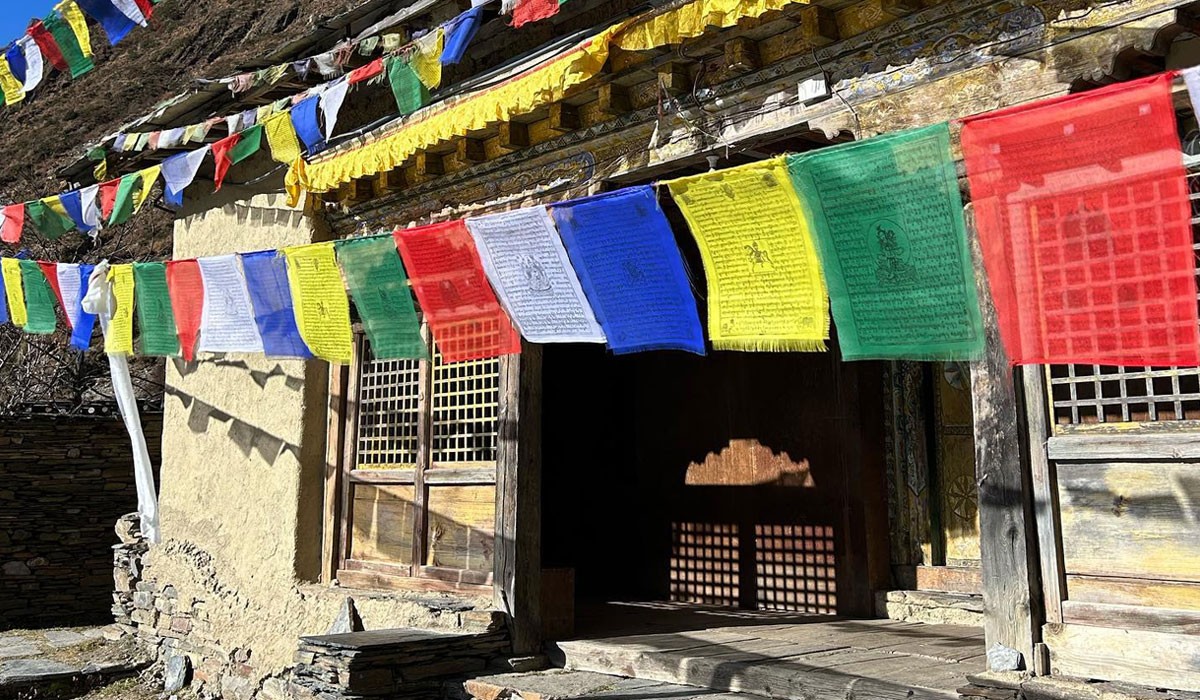
What to Expect During Inspections?
The permit inspection process across the trekking posts in Nepal is routine, respectful and efficient. Officers in these posts will inspect your RAP, MCAP, ACAp and Tsum RAP (if applicable). Your permits should be in hard copy, not just digital.
Your licensed guide may also need to show his/her official guide license and registration number. The authorities at the checkpoints record the date, group size and agency name for tracking and safety purposes along the way.
Although these permit inspections may seem repetitive, be patient. These logs are critical for search and rescue coordination in case of emergencies.
Tips for a Hassle-Free Permit Process
- Book early, timing is everything. The RAP permit for Manaslu and Tsum Valley is processed through Nepal’s Department of Immigration (takes 1 to 2 working days minimum)
- Trek through a registered trekking agency, required for RAP permits
- Ensure all documents are correct: a clear passport copy, a valid visa and passport-sized photographs
- Plan both Manaslu and Tsum Valley duration in your RAP, can’t add mid-trek
- You cannot modify your route to include new restricted areas once the RAP is issued
- Carry printed copies of all your permits, even though your guide holds the originals
- Plan your tour based on permit coverage, not the other way around
- Permit costs vary by season and region, calculate the cost before committing
- Stay updated with the permit rules
